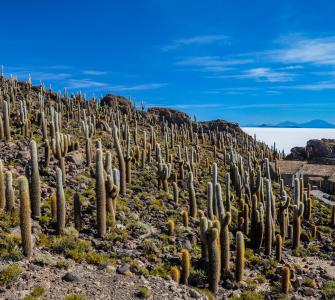Bolivia’s protected area system consists of 123 protected areas that account for roughly 20% of the country’s overall territory and include 11 of Bolivia’s 13 ecoregions (1). As a result, this system is critical to the preservation of Bolivia’s natural lands and ecosystems. Yet too often, policy makers view funding for conservation as a poor investment of limited national resources. In part, this misguided belief stems from a lack of information on the benefits of ecosystem services and the devastating effects of permanently losing such critical habitat and biodiversity. Consequently, decision makers often fail to adequately fund protected area systems and resist their expansion.
To help address these issues, Conservation Strategy Fund (CSF) conducted a series of economic valuation studies on ecosystem services related to water provision, carbon sequestration, and climate regulation to provide technical information about the role that protected areas play in the economy.
For water provision, CSF analyzed the contribution of national protected areas in the provision of water for household consumption, irrigation, and energy generation, as well as how these three uses contributed to the economy. Results show that 30% of all water flow is generated in protected areas, and nearly all water used in Bolivia goes through the Amazon. National protected areas contribute 17% of the national water supply, and, on average, each square kilometer of national protected area provides an additional 1.01 million cubic meters of water. Additionally, the analysis demonstrated that water from protected areas has an estimated economic value of nearly 3 billion USD for irrigation, 1.5 billion USD for household use, and 613 million USD for electricity.
For carbon sequestration and climate regulation, CSF analyzed the contribution of national and sub-national protected areas to CO2 sequestration and storage. Results show that the forests of protected areas store 21% of CO2 stored by Bolivia’s forests. In addition, 60% of carbon in protected areas is stored in the Amazon biome, highlighting the importance of the Amazon for climate regulation at a regional and global level. National protected areas also have an average annual positive flux of 28 million tons of CO2, while sub-national protected areas have a positive CO2 flux equivalent to 13 million tons per year. Through a comparative geographical analysis between protected areas and areas without protection, our study demonstrated that protected areas have the capacity to remove between 35% and 57% of the country's total emissions. Lastly, national protected areas account for 60% of Bolivia’s total CO2 storage capacity, while departmental and municipal protected areas account for 23% and 17% respectively.
CSF is now working with the Servicio Nacional de Áreas Protegidas, (National Protected Area Service) (SERNAP), on a coordinated marketing campaign. Our goal is to increase the knowledge and awareness among key decision makers on the role that protected areas play in carbon sequestration and climate regulation and to increase and secure long-term funding for Bolivia's protected areas. To learn more about the study and results, find the full report here, as well as the policy briefs here (on water provision) and here (on carbon sequestration and climate regulation) (all reports in Spanish).
The project was conducted in partnership with SERNAP (Servicio Nacional de Áreas Protegidas, National Protected Area Service). Support for this project was provided by the Andes Amazon Fund.
(1) An ecoregion is defined as a geographical unit that contains a geographically distinctive combination of species, natural communities, and environmental conditions. These units have characteristic flora, fauna, and ecosystems.
Photo: Isla Incahuasi (Pescadores), Salar de Uyuni, Bolivia
Photo Credit: Shutterstock.com/ Hugo Brizard

